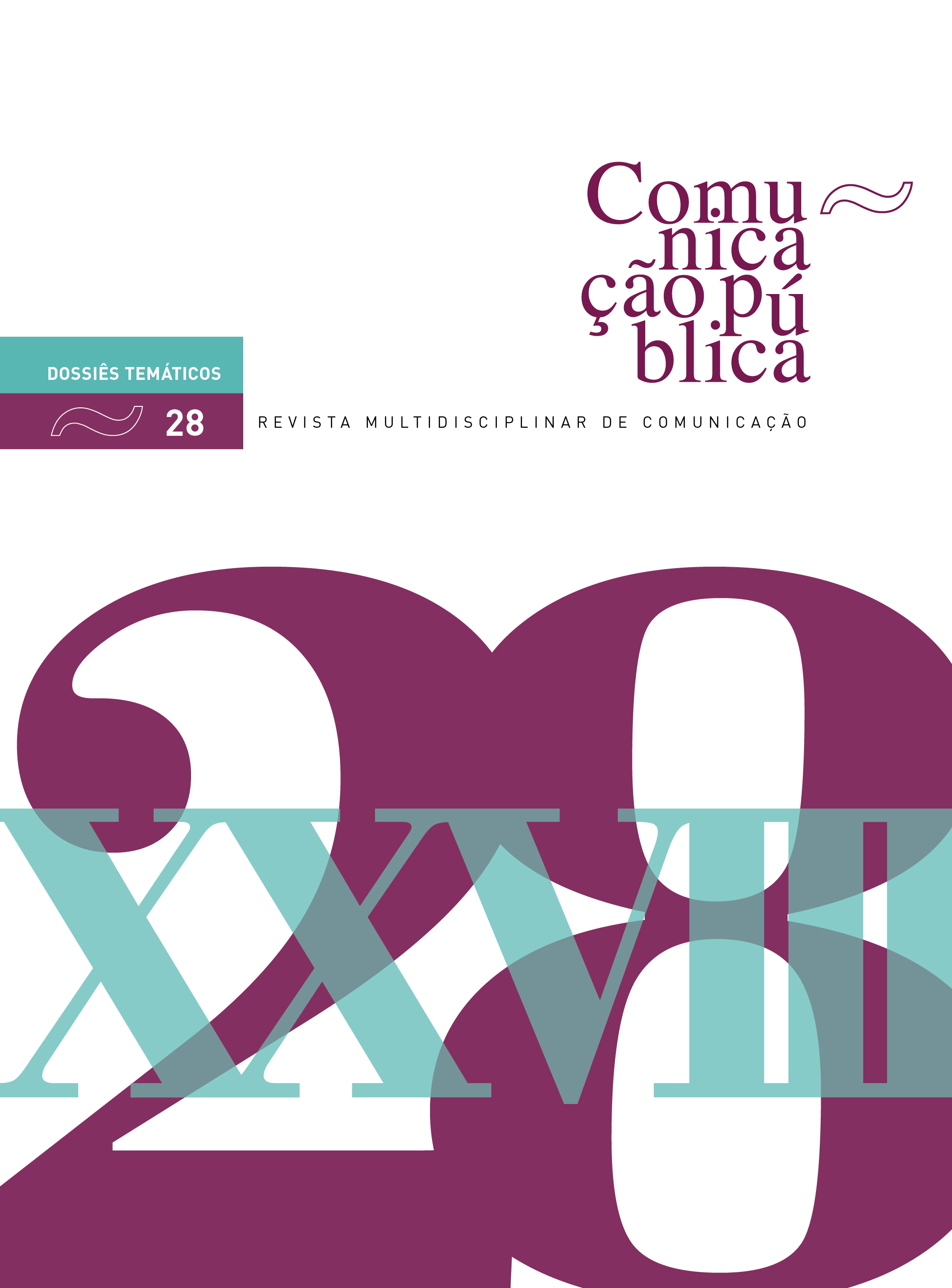The spread of fake news in 2018 Brazilian elections
DOI:
https://doi.org/10.4000/cp.7438Keywords:
digital media, cyberactivism, fake news, BrazilAbstract
Seeking to understand the role of the new media in modern democracies, this article discusses the consequences of digital activism, through the proliferation of fake news, using the 2018 Brazilian elections as a case study. Methodologically, we first performed a bibliographic contextualization about media cyberactivism and fake news. Subsequently, we entered the empirical part of this study, in which we explored the scope of fake news selected for its relevance in the 2018 Brazilian elections. To perform the study, we used the data analysis tools Google Trends and Buzzsumo. Based on the empirical study, this research seeks to answer three questions: (1) When did the selected fake news obtain the first search peak on Google?; (2) When did they achieve greater repercussion on Google?; and (3) What was their reach on Facebook and Twitter? The theme studied is important because it addresses the reach of fake news in the public opinion, which may or may not have been a differential in the election result. In conclusion, we identified the growth in the search for subjects related to the fake news analyzed as they were mentioned in the presidential campaign and mainly on election day when these messages could have a fundamental role in the choice of vote.
Downloads
References
Barabási, A. (2009). Linked: A nova ciência dos networks. São Paulo: Leopardo Editora.
Barboza, D., & Jardelino, F. (2019). Ativismo digital e redes de indignação: Os grupos de pressão. In S. B. Oliveira, D. Gouveia, A.M.C. Nogueira, & E. Felipe (Eds, Os impactos das novas mídias na comunicação: Relatos profissionais e arquivos acadêmicos (Vol. 2, pp 171-188). Projeto Conexões, Recife: Editora UFPE.
Brites, F., & Porcello, F. (2018). Verdade x mentira: A ameaça das fakenews nas eleições de 2018 no Brasil. Anais do 41º Congresso Brasileiro de Ciências da Comunicação.
Chaloub, J., & Perlatto, F. (2015). Intelectuais da nova direita brasileira: Ideias, retórica e prática política. Anais do 39º Encontro Anual da ANPOCS - GT 19 Intelectuais, Cultura e Democracia.
Christakis, N. (2009). Connected: The surprising power of our social networks and how they shape our lives. New York: Little Brown Co.
Codas, G., Cruz, S. V., & Kaysel, A. (2015). Direita, volver!: O retorno da direita e o ciclo político brasileiro. São Paulo: Editora Fundação Perseu Abramo.
Fallis, D. (2015). What is disinformation? Library Trends, 63(3), 401–426.
Figueiras, R. (2017). A mediatização da política na era das redes sociais. Lisboa: Alêtheia Editores.
Fundação Getúlio Vargas (FGV). (2017). Robôs, redes sociais e política no Brasil: Estudo sobre interferências ilegítimas no debate público na web, riscos à democracia e processo eleitoral de 2018. Rio de Janeiro: FGV.
Howard, P. N., & Kollanyi, B. (2016). Bots, #Strongerin, and #Brexit: Computational propaganda during the UK-EU referendum. (Working Paper No. 2016.1). Oxford, UK: Project on Computational Propaganda. DOI : 10.2139/ssrn.2798311
Ituassu, A., Lifschitz, S., Capone, L., & Mannheimer, V. (2019). Campanhas online e democracia: As mídias digitais nas eleições de 2016 nos Estados Unidos e 2018 no Brasil. In P. C. Pimentel & R. Tesseroli (Eds.), O Brasil vai às urnas: As campanhas eleitorais para presidente na TV e internet. Londrina: Syntagma Editores.
Jenkins, H. (2009). Cultura da convergência. São Paulo: Editora Aleph.
Jenkins, H., Ford, S., & Green, J. (2014). Cultura da conexão: Criando valor e significado por meio da mídia propagável. São Paulo: Aleph.
Keeley, B. L. (1999). Of conspiracy theories. The Journal of Philosophy, 96(3), 109-126. DOI : 10.2307/2564659
Keller, T. R., & Klinger, U. (2019). Social bots in election campaigns: Theoretical, empirical, and methodological implications. Political Communication, 36(1), 171–189.
King, G., Keohane, R., & Verba, S. (1994). Designing social inquiry. Princeton: Princeton University Press. DOI : 10.1515/9781400821211
Kotler, P., Kartajaya, H., & Setiawan, I. (2017). Marketing 4.0: Do tradicional ao digital. Rio de Janeiro: Sextante.
Recuero, R. (2014). Contribuições da análise de redes sociais para o estudo das redes sociais na internet: O caso da hashtag #Tamojuntodilma e #CalaabocaDilma. Revista Fronteiras - Estudos Midiáticos 16(2), 60-77. DOI : 10.4013/fem.2014.162.01
Rogers, R. (2016). O fim do virtual: Os métodos digitais. Lumina, 10(3). 1-34. DOI : 10.34019/1981-4070.2016.v10.21353
Rogers, R. (2018). Issuecrawling: Building lists of URLs and mapping website networks. In C. Lury, P.T. Clough, U. Chung, R. Fensham, S. Lammes, A. Last, M. Michael, & E. Uprichard (Eds.). Routledge handbook of interdisciplinary research methods (pp. 169-175). London: Routledge.
Sorj, B., & Fausto, S. (2016). Ativismo político em tempos de internet. São Paulo: Edições Plataforma Democrática.
Sunstein, C. R., & Vermeule, A. (2009). Symposium on conspiracy theories. Conspiracy theories: Causes and cures. The Journal of Political Philosophy, 17(2), 202–227.
Downloads
Published
Issue
Section
License
Copyright (c) 2020 Direitos do Autor (c) 2020

This work is licensed under a Creative Commons Attribution-NonCommercial 4.0 International License.
Os conteúdos da Comunicação Pública estão licenciados com uma licença Creative Commons - Atribuição-NãoComercial 4.0 Internacional.


